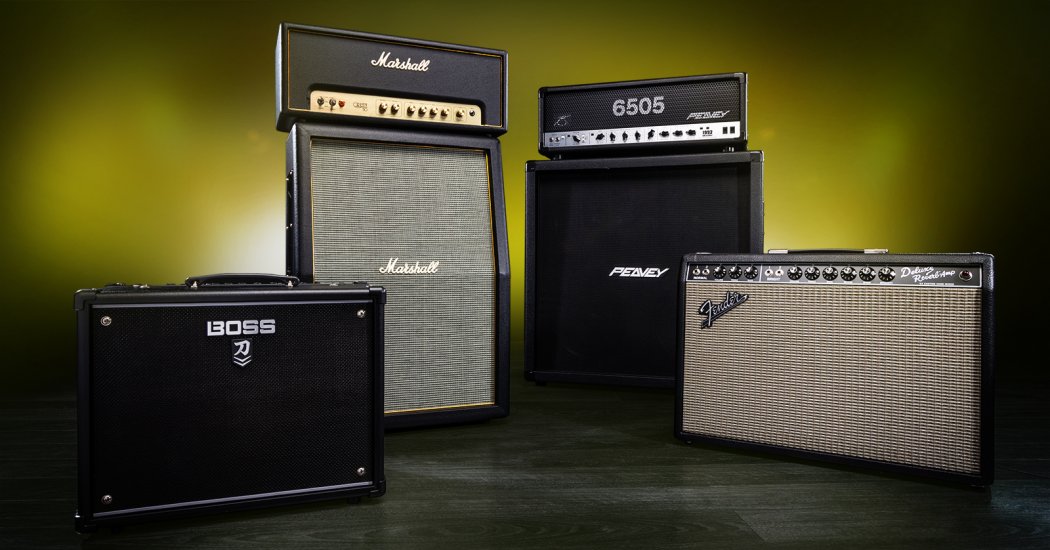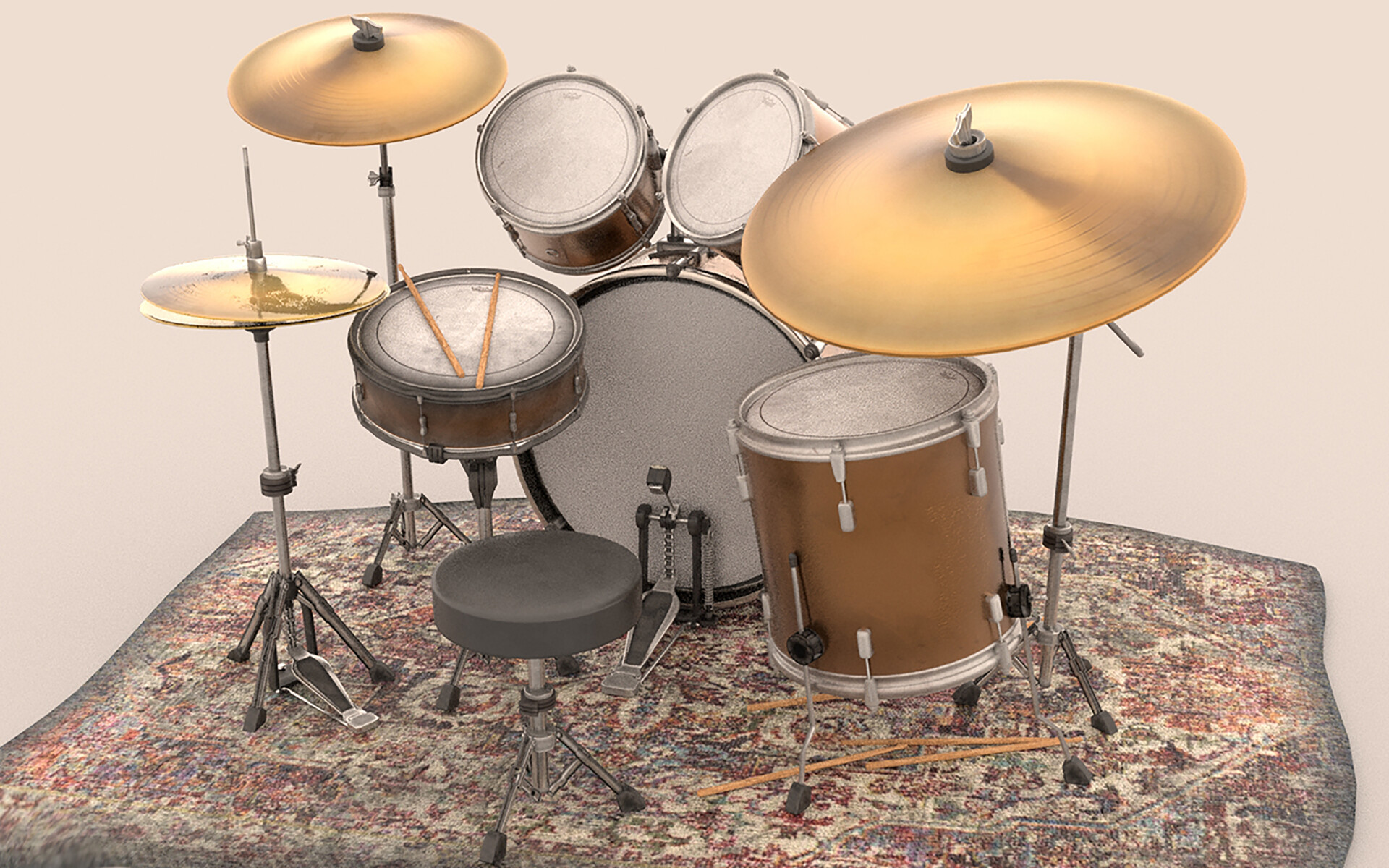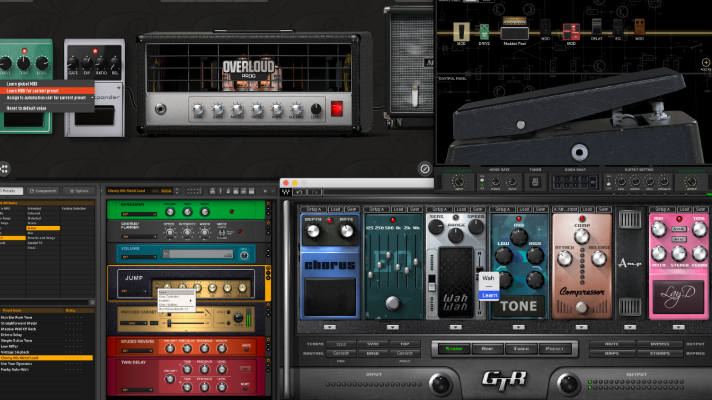10 Creative Uses for Amp Simulator Plugins
In our previous blogs, we looked at some great paid-for and free amp simulation plugins. These plugins have become invaluable tools when working with Electric Guitars as they negate the need for physical amps and cabs offering guitarists almost limitless control over guitar tones. But classic electric guitar amplification and distortion are not the only things Amp Simulators are great for. With their ability to drastically shape sound, they also offer a plethora of other creative applications. So with this in mind let’s check out 10 creative alternative applications for Amp simulator plugins.
1: Multi Amping – Layering and texturing
Why settle for just one amp when you can roll out multiple instances?!? DAWs provide the sort of Amplification opportunities Jimi Hendrix could have only dreamt of. Experiment by adding two or more amps or speaker cabs to an audio track. You can then pan these multiple instances to create a stereo-spread effect. Big epic textures can be made using this technique. Depth and complexity can also be obtained by adding different amp models, settings, and mic placements to each layer. And with most of the creative tips on this list, they’re not exclusively aimed at guitar. Why not try multi-amping vocals, keys, brass sections or even a tin whistle!!!

2: Subtle Saturation
While most people associate guitar amps with crunch and distortion they are also extremely effective at adding subtle saturation and character. For example, tube amps can impart a warm character to an audio source. Amp simulators can therefore be very effective in giving a track a vintage feel especially when using virtual instruments. The key to using guitar amps for saturating purposes is subtlety. Don’t overcook a signal. Often just feeding a signal through a clean amp is enough to add some character and vibe.
4: Drums with Attitude
Midi drums and loops can often have a clean and sterile sound to them. They can almost sound a little too perfect. Try adding different amp simulators to the drum mix buss. Experiment with your amp controls as well as the amount of dry and wet signal until you find a nice balance. For a gritty 60s drum sound be prepared to add a touch more distortion and even some amp reverb if available. Alternatively, you may want to simply add some added amp crunch to an individual drum element such as the snare or kick.

3: Dirty delays and Reverbs
Amp sims can help to create an added dimension to reverb and delay effects. Experiment by sending a 100% wet reverb or delay signal through an amp or speaker cab. You can drive the signal for some added attitude or presence. For effect-driven music styles such as Dub reggae or ambient music amp sims applied to FX can provide whole new levels of possibility. Especially when automated (see no7)
5: Electrifying Acoustic Guitar
While traditionally guitar amps are the natural counterpart to the electric guitar don’t underestimate the unique character they can create when applied to a nylon strung acoustic. Feed an acoustic guitar through the right amp or speaker cab and be prepared for some unique results. While not a commonly used practice certain artists such as Fleetwood Mac and Eric Clapton have famously fed acoustic guitar through electric amps. Why not shun conventionality and give it a go?
6: Synth Grime
Similarly to drums, virtual synths can sometimes sound a little too perfect and clean. Old analogue synths were often temperamental beasts. Their digital counterparts tend not to exhibit the same qualities. This is where a subtle bit of amp simulation can help to give a virtual synth some edginess and attitude. Drive the synth signal a little and you may help to negate the predictability factor of a VST. Adding some additional gated amp noise can also help to give your synths that all-important authenticity.
7: Automated Action
Amp simulation can be given added dynamism through the power of automation. If you can apply automation to the controls on your amp sim then try automating these parameters. Gradually increase the drive on a guitar or maybe cut some EQ frequencies for dynamic effect. This practice can be highly effective for building intensity in certain sections or adding variation to repetitive parts.
8: Vocal Distress
Vocals can be an area where amp simulators can add some dramatic tonal character. The distorted vocal effect has been employed by many artists over the years. One such example can be heard on the Portishead classic Strangers (see below) Other genres such as hard rock and Hip Hop can also suit a distorted amplified vocal. The effect doesn’t always have to be obvious. If you’re trying to recreate a vintage old-school aesthetic you may want to consider inserting a speaker cabinet emulator in the vocal chain. Cab emulations tend to employ impulse responses to capture the sound of a speaker’s output including mic positioning.
9: Parallel Processing
Parallel processing relates to the ratio between a dry and wet signal. Rather than simply inserting an Amp simulator onto a track and using the input and output gain to adjust the amplification level and tone try using parallel processing to find the balance. The advantage of parallel processing is that you retain the full characteristics of the original dry signal. You can therefore dial in the desired amount of Amp effect without affecting the original signal. This works particularly well when applied to drums for a bit of added grit or when you need a touch of amp saturation on a track.
10: Wheel out the Leslie
Finally, enter the unique and highly distinctive sound of the Leslie Cabinet. Originally designed to accompany an electric organ, the mighty Leslie speaker cabinet also sounds fantastic on a whole host of instruments and even vocals. Synonymous with the psych sound of the 60s and prog rock of the 70s adding a Leslie can give your productions an otherworldly tripped-out vibe.
The unique sound of a Leslie is generated using a physically spinning horn that creates a modulated effect to the high mids. You generally have a fast or slow setting although many software emulations offer full control over the spin speed. A great example of a guitar put through a fast Leslie can be heard on “Goodbye Mr A” by the Hoosiers. “The Theme from Black Belt Jones” by Dennis Coffee takes it one step further by putting the vocals through a Leslie and wha-wha to devastating effect!
Remember – RouteNote Create subscriptions start from as little as $2.99. You also get 10 FREE credits to spend on samples along with access to our FREE sample pack bundle when you sign-up!
